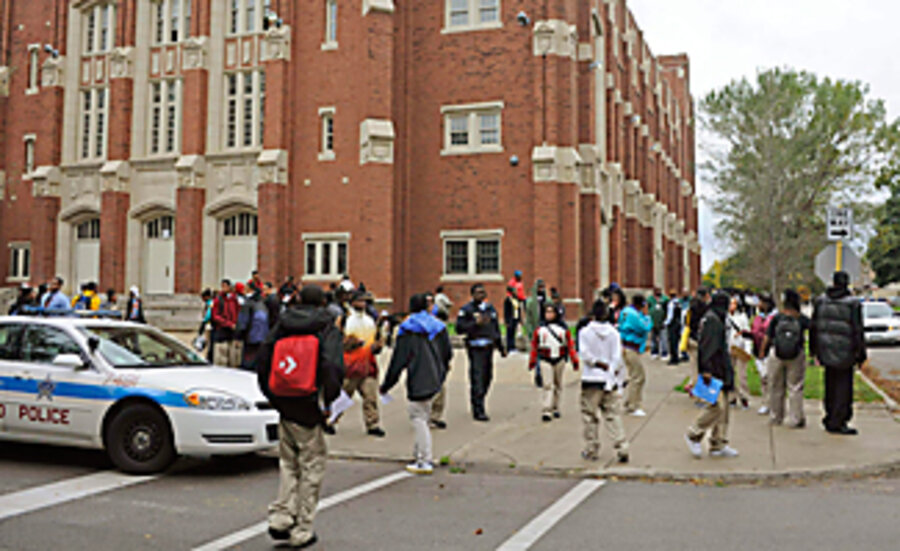Two ways Chicago can curb its youth violence epidemic
Loading...
| Chicago
US Attorney General Eric Holder on Wednesday offered his prescription for youth violence and the kind of rage that caused the beating death of Chicago student Derrion Albert nearly two weeks ago: "A comprehensive, coordinated approach ... that encompasses the latest research."
In many ways, Chicago represents a good place to start.
For the most part, experts say, there isn't much concrete research about what does work. But two of the models Mr. Holder can point to are here. The city school system is spending $30 million to target the kids most at-risk for violence, and the much-lauded CeaseFire program has succeeded by focusing efforts on a few key individuals in a community.
The factors that lead to violence are well understood – untreated mental illness, educational failure, gang culture, and alcohol. Yet there isn't one easy "fix," be it more police, afterschool programs, mentors, or gang intervention.
"There are a bunch of things everyone knows we should be worrying about, but we don't know what the best thing is to do," says Jens Ludwig, director of the Crime Lab and the University of Chicago, which recently released a report on gun violence among Chicago youths. "We don't know nearly as much as we need to."
Derrion's death seems to have galvanized policymakers. The brutal beating caught on videotape, in which two groups from the same high school but different neighborhoods brawled, is indicative of a broader trend of growing violence among young black males.
Between 2002 and 2007, the number of homicides involving black male juveniles as victims grew by about 30 percent and, as perpetrators, by more than 40 percent, says James Alan Fox, a criminologist at Northeastern University in Boston. At the time, overall crime rates were going down or staying flat.
Some of the spike is due to resources being shifted away from crime- and gang-prevention programs toward homeland security, Professor Fox says.
CeaseFire's success
Gary Slutkin believes he has found an antidote. As the executive director of CeaseFire, he has seen shootings and killings in the districts where he operates drop by 30 to 70 percent.
The key is a systematic approach that focuses on certain individuals as "transmitters" of violence. Trained "violence interrupters," many of whom have a gang history themselves, are plugged into the community and get warnings when someone is upset and likely to act out. They reach out to the likely perpetrators and help talk them out of it.
Meanwhile, outreach workers try to change the attitudes of high-risk individuals, persuading them that it's not reasonable to shoot someone because of dispute about money or a girl.
"This is how epidemics are reversed," says Mr. Slutkin. "You interrupt the transmission, work with those most likely to transmit next, and work on the overall behavioral norm that underlies it."
Simply increasing enforcement won't make much difference, since "these kids are generally more concerned about what their friends think than about whether they're going to go to prison or even whether they're going to die," Slutkin says.
He needs about $15 million a year to expand to all the districts that need the program, he adds. He could get at least some of it. Holder cited CeaseFire as the kind of program that could receive federal funding under a proposed $24 million program for community-based partnerships.
The Chicago schools plan
Chicago schools, meanwhile, have announced their own targeted program, in which they've used demographic and academic factors to target 10,000 students who are at high risk of being a victim of violence.
In the program, 1,200 "very high risk" students will be given a job and assigned an advocate-mentor who works with the student's family, is on-call 24/7, and spends at least 16 hours a week with the student.
Arguably, putting money into quality early childhood education – in order to prevent violence down the road – might be a better strategy, says Ludwig . Still, he adds, "the part of what [Chicago Public Schools] is doing that is unambiguously a good idea is to try to be more data driven and systematic in targeting resources."
-----
Follow us on Twitter.





